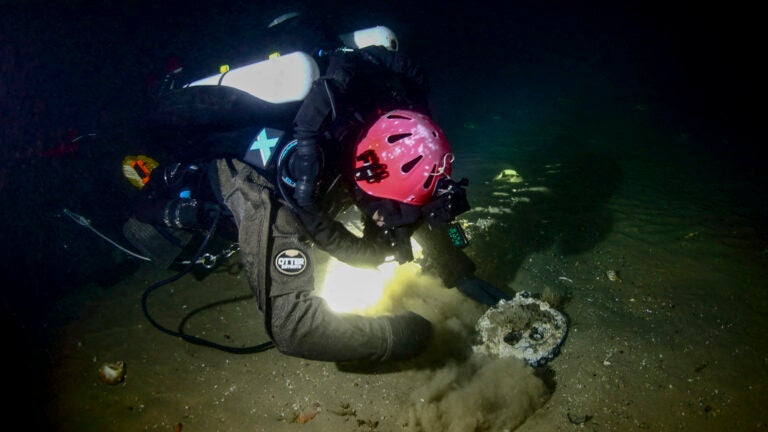Local News
For over a century and a half, the location of the ship’s final resting place stumped shipwreck hunters.
A French passenger steamship that sank in 1856, killing over 100 people, was found last month at the bottom of the Atlantic Ocean, said D/V Tenacious, a New Jersey-based shipwreck hunting group.
The ship, Le Lyonnais, which was built in England in 1855, was traveling from the United States to France when it collided with the Adriatic, an American sailing ship, killing 114 of Le Lyonnais’ 132 total passengers, D/V Tenacious said Sept. 4. The Adriatic never stopped.
For over a century and a half, the location of the ship’s final resting place stumped shipwreck hunters. Then on Aug. 24, seven D/V Tenacious shipwreck hunters confirmed that they had found the wreckage about 140 miles east of Nantucket, Massachusetts.
“Being able to find this ship, I felt like I was giving closure to the people who suffered there,” Jennifer Sellitti, 50, said. Sellitti is a lawyer and historian and wrote a book about the sinking of Le Lyonnais called “The Adriatic Affair: A Maritime Hit-and-Run off the Coast of Nantucket.”
D/V Tenacious said it was not disclosing the wreck’s exact location because it did not want others to flock to the site. It plans to return to the dive site to learn more about the ship.
On Nov. 2, 1856, crew members for Le Lyonnais and The Adriatic realized too late that they were about to collide.
“The steamer continued her course, which would have carried her by our stern,” the unnamed captain of the Adriatic wrote in a statement that was on the front page of The New York Times — then called The New-York Daily Times — on Nov. 19, 1856. “We endeavored to save ourselves by tacking but it was too late and in a few minutes we were afoul, striking the steamer.”
The Adriatic, which had minor damage from the collision, did not stop and routed itself for the nearest port home to Gloucester, Massachusetts, where it ended up two days later, the captain said. The crew initially made no mention of the collision with Le Lyonnais, believing the damage to Le Lyonnais to be insignificant, Sellitti said.
In reality, Le Lyonnais’s hull was punctured, Sellitti said. The damage looked like small holes, which the crew attempted to patch. But the crew struggled to keep the ship moving and it began to slowly drift below the surface. By the third day after the collision, on Nov. 5, the ship had sunk, she said.
In the 1850s, shipmakers were shifting from sail-powered ships to steam power, Sellitti explained. The crash became international news almost instantly because it ignited difficult debates about technological and geopolitical issues, Sellitti said.
When sail and steam ships encounter one another, which one has the right of way? How do two ships from different nations handle themselves in international waters? And, should the captain of the Adriatic be held liable?

In 2023, D/V Tenacious conducted sonar surveys of the ocean floor on the Georges Bank area of the Atlantic Ocean and found two shipwrecks that had potential to be Le Lyonnais. In August, crews conducted a dive to one location but quickly found it to be the remnants of a completely different wreck.
On the dive to the second location, Joe Mazraani, 46, a criminal defense lawyer who also hunts shipwrecks, noted that wreck had the design of Le Lyonnais: a horizontal steam engine, sails and the same engine cylinder width.
“For the life of me, I didn’t think we were going to get this thing nailed inside of three years,” he said.
Mazraani said it was “sobering” to spend time with something that most likely had not been seen since the day it went down, in a catastrophic event that caused incomprehensible pain and suffering.
“Another terrible calamity has occurred at sea,” the front page of the The New-York Daily Times read on Nov. 15, 1856. “The captain and some 40 persons took to a raft which is believed to have gone to pieces early, many lives being lost.”
This article originally appeared in The New York Times.
Extra News Alerts
Get breaking updates as they happen.
